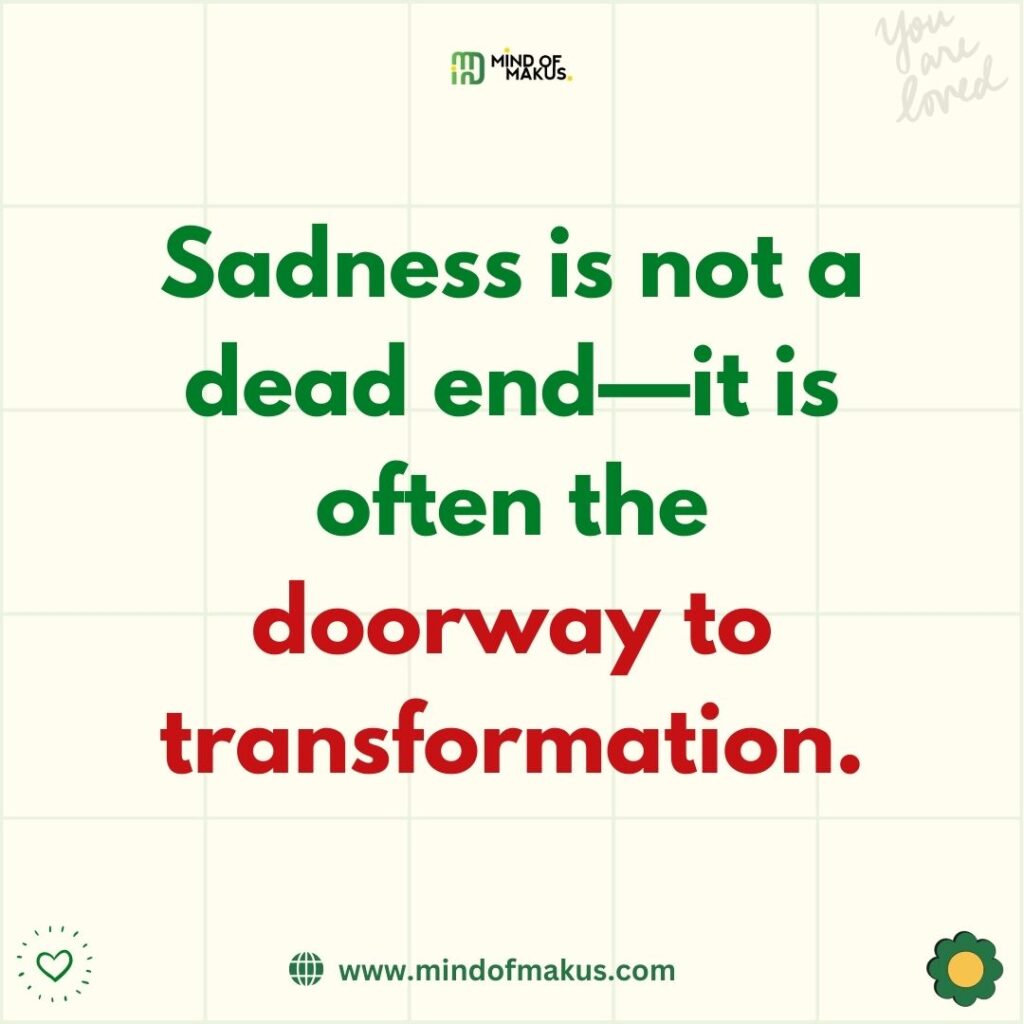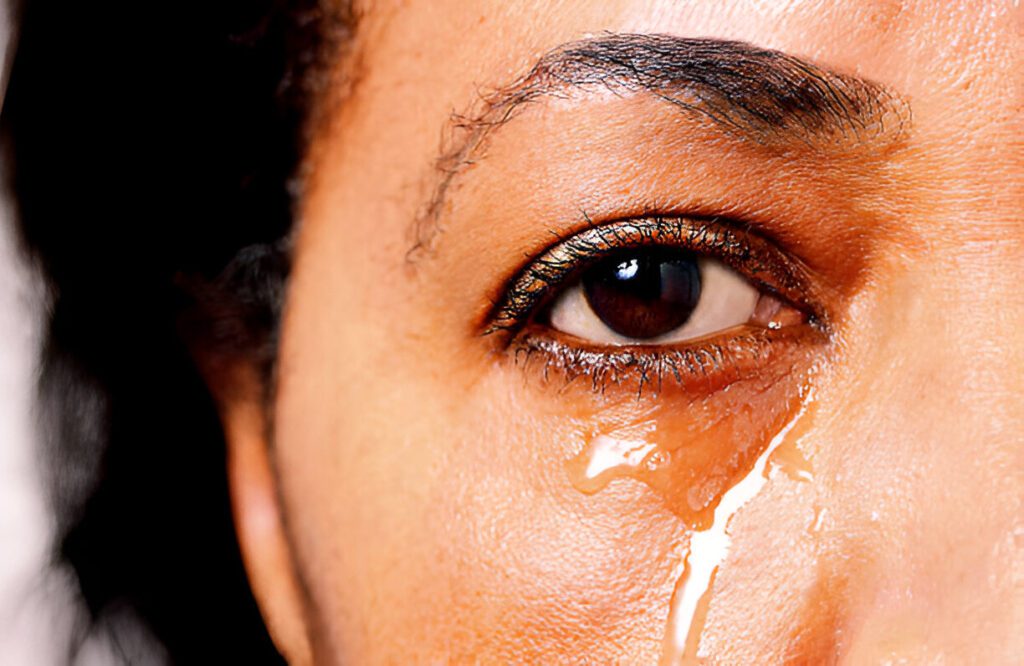Hello dear friend,
As I write and edit this, we are coming up to the whole point of Christianity, Easter. We however don’t get there until we get through Good Friday — a day that holds space for pain, reflection, and deep reverence. It reminds us of the sorrow that comes before the celebration. And in this sacred pause, we are invited to consider a powerful truth:
There is joy to be found in sadness.
Strange? Maybe. But perhaps today is the perfect day to explore this truth together.
The Cross—and What It Represents
Good Friday is not a cheerful day. It’s a day of pain, sacrifice, and unimaginable grief. Yet, it also reveals the strength of love, the purpose behind pain, and the resilience of the human spirit.
Jesus didn’t pretend to be okay.
He wept. He felt deeply. He questioned.
And yet, through that pain, He revealed what unconditional love looks like. He chose to go through with it, knowing how it will end.


A reminder us that we don’t have to hide our sadness. We can bring it into the light—and find strength in the middle of it. Jesus cried out to The Father, who do you cry out to when you are nailed to the cross of life’s troubles?
What If Sadness Isn’t the Enemy?
In a world obsessed with happiness and positivity, sadness is often seen as something to fix, escape, or silence. Arthur Brooks says happiness is not a feeling, the feeling is just the evidence of being happy. So let’s not get caught up in the feelings.
The things that really bring us the happiness are: enjoyment, satisfaction and meaning.
But what if sadness isn’t something to rush past?
What if it’s something to listen to, to learn from?
Sadness tells us:
- That something mattered
- That we’ve loved and lost
- That our hearts are still open
- That we care enough to be moved
- That we are human
In that sense, sadness is a quiet form of joy—the joy of still feeling, still loving, still hoping.
A good cry
I remember crying recently because I just felt overwhelmed, I was alone, so na only me clean my eye carry my bible begin dey pray. Lol
Life by its very nature is full of challenges since the days of Adam and his Achalugo.
Our sheer human-ness justifies us having tough days. The only ways I have found to get through them is to take those feelings, name them, then let them like like a backpack at the foot of the cross where Jesus died.


Jesus cried in the garden. He felt overwhelmed. He asked for the cup to pass. But still, He chose to go through it—for love, for redemption, for us.
There’s something deeply powerful in that.
Here’s how we, too, can find strength in our difficult emotions:
1. Name What You Feel
Sometimes, healing begins with this simple truth:
“I’m sad.”
“I’m hurting.”
“I’m not okay right now.”
Naming it doesn’t make you weaker. It makes you honest. Even Jesus cried out, “My God, why have You forsaken me?”—a reminder that faith and feeling lost can coexist.
I remember coming to the realisation that I was burning out, and letting my family friends and mentors know this was happening whenever they asked.
Not looking for sympathy but empathy so you know why you won’t hear from me,or I say no to your project. We are human though carrying the Spirit of God in us.
2. Let the Emotions Flow
Sadness is a wave. It comes. It crashes. And, eventually, it passes.
Let it move through you without resistance. Tears are not a sign of weakness. They are sacred release. Often, what follows is a deeper calm, a clearer heart, and a quiet strength.


3. Remember That Resurrection Is Coming
Easter Sunday is on the horizon.
And just like the story of the Cross, your story doesn’t end in sorrow.
- That grief? It will stretch you.
- That pain? It will teach you.
- That emptiness? It can become space for something new to be born.
Sadness is not a dead end—it is often the doorway to transformation.
Subscribe to My Newsletter
4. Connect With Others in Their Pain
Sadness can isolate us—but it can also connect us.
Let your sorrow open you to others. Be a safe space. Listen without fixing. Love without condition. You were never meant to carry the weight alone.
There is strength in shared silence. Healing in presence.
Speak life into you, turn on music, listen to worship. Don’t let your voice be stolen.
5. Practice Hope—Even in the Dark
Hope doesn’t always look like bright lights and big smiles. Sometimes, it’s just a quiet whisper:
“I’m still here.”
“This won’t last forever.”
“I don’t understand yet—but I believe something good will come.”
That’s the kind of hope Good Friday offers us—the kind that lives in shadows and still speaks life. Let the darkness know you are alive!!!!!.
Make written notes of life and make plans for yourself on the other side of this.
Final Thoughts: This is Your Redemption Story
Allow yourself to pause.
To feel.
To weep if you must.
To remember that sadness is not the opposite of joy—it’s often a part of it.
“Blessed are those who mourn, for they shall be comforted.” – Matthew 5:4
Even in your weeping, you are not alone.
Even in your sadness, strength is forming.
Even on Friday, Sunday is coming.
You can Support My Work
So, embrace the tears. Honor the ache. And let sadness teach you how to grow into joy that is deeper, fuller, and more grounded.
Wishing you peace, presence, and resurrection hope today.
Reflection Question:
What is one emotion you’re learning to sit with instead of pushing away?
Share in the comments—I’d love to hear your journey.
Until next time, stay authentic.
Stay resilient, and continue to honour your needs.
Live wholeheartedly,
Amaka



